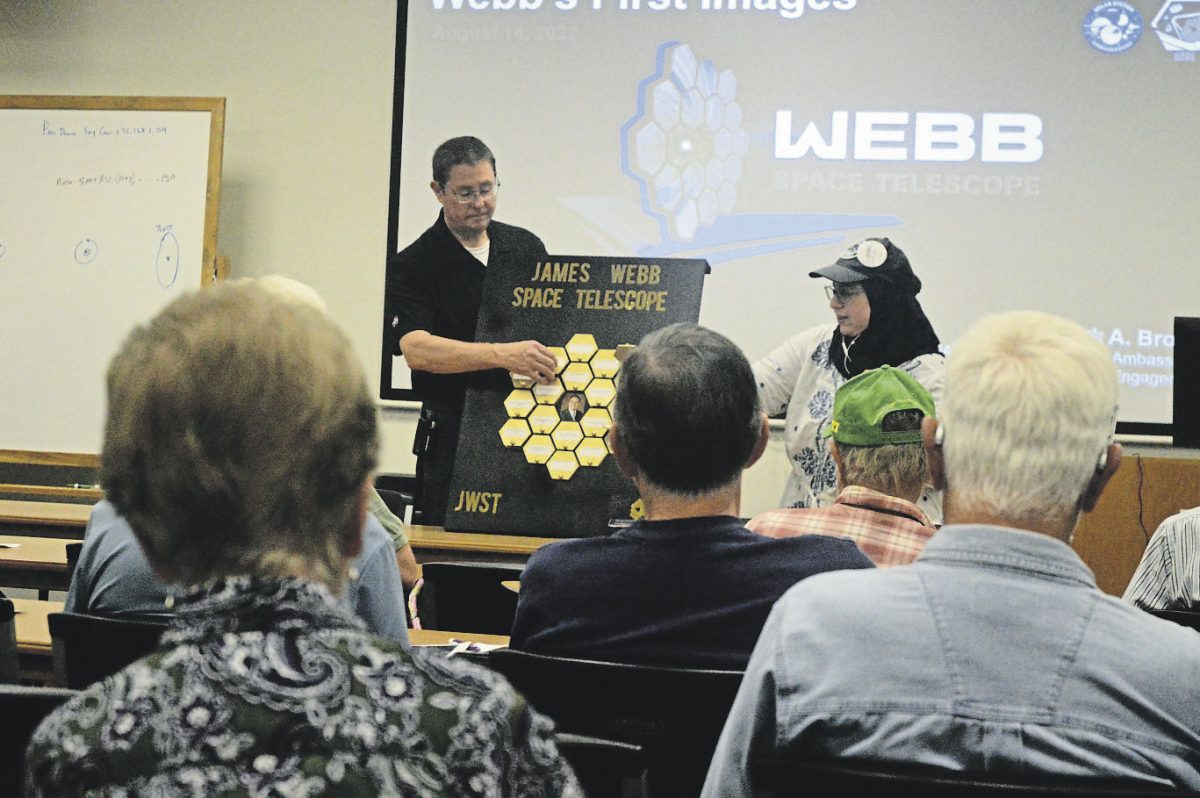More than 100 people attended the James Webb telescope event held at the Eastern Iowa Observatory and Learning Center in rural Mount Vernon Sunday, Aug. 14.
The observatory was a host site in early July for some of the new visuals from the Webb telescope’s first reveal, and Sunday’s event was held to give people more information on the new telescope.
Kids games, snacks and beverages were available, and attendees were able to explore the observatoy’s many other telescopes as well.
Mark Brown, Nasa JPL Solar System Ambassador, presented a lecture on the first images revealed from the newly launched telescope.
Brown said the telescope currently has enough fuel to last for 10 years, but if the fuel is only used for maneuverability, that could stretch to 20 years.
The telescope was also launched in a semi-stable orbit 930,000 miles from Earth, and focuses on galaxies light years away from our own.
The telescope has equipment used to running in the extreme cold temperatures of space, since they can drop as low as 394 degrees below Fahrenheit.
The telescope did get struck by a bit of space debris sometime between May 23 and May 25, lightly blemishing one of the mirrors of the telescope.
Brown explained that while many of the photos taken by Webb will have colors, they are trying to depict some of the higher levels of infrared or other colors it can detect outside of human sight and indicate what types of wavelengths or information the telescope is seeing.
The first image that Brown explained was the SMACS 0723, where he gave an analogy to explain how wide a swath of the sky that the telescope must be looking at for that image.
“That image is looking at roughly the size of a grain of sand held at arm’s length,” Brown said.
The image shows many galaxies as well in one shot of that space.
The second image was Stephan’s Quintet, one of the largest images the telescope has taken to date.
Brown said the images show a lot more interaction with some of the galaxies than had been expected in the past.
The third image was the cosmic cliffs of the Carina Nebula, also known as the Cosmic cliffs.
The cliffs were first photographed by Hubble Telescope, but the resolution wasn’t as sharp as seen by Webb, which highlights the mass and colors of the gaseous cavity of NGC 3324, composed of ultraviolet radiation and stellar winds from many young stars located in the bubble.
Webb has also provided new knowledge on an exoplanet Wasp-96b. Hubble first saw the exoplanet in 2013, Brown said, but Hubble’s readings didn’t pick up some of it’s gaseous composition. Webb, with its better mirrors and instruments, picked up hints of water vapor, which changed the knowledge scientists had on that same exoplanet.
An attendee asked why Webb wouldn’t look at our own universe.
Brown explained that Webb has a very, very small point of view with its telescope, and there are several telescopes in our own solar system already making those observations.
One of the youngest audience attendees asked how the telescope was launched into space to begin with.
Brown explained that the telescope and its many mirrors and sensors were folded into a rocket to get it to it’s orbiting point.
“It took a lot of planning and thought to get the telescope to fit into a compact shape prior to it being launched,” Brown said.
Someone asked why Webb has been delivering better pictures than Hubble.
Brown said that it amounted to more mirrors and the ability to capture more light.
“Being able to collect more light when taking photos means it gets better resolution on those shots,” Brown said.
Eastern Iowa Observatory hosts Webb telescope event
August 25, 2022
Mark Brown highlights a model of the Webb’s telescope for kids to look up facts about the newly launched telescope at the event at the observatory.
About the Contributor
Nathan Countryman, Editor
Nathan Countryman is the Editor of the Mount Vernon-Lisbon Sun.

